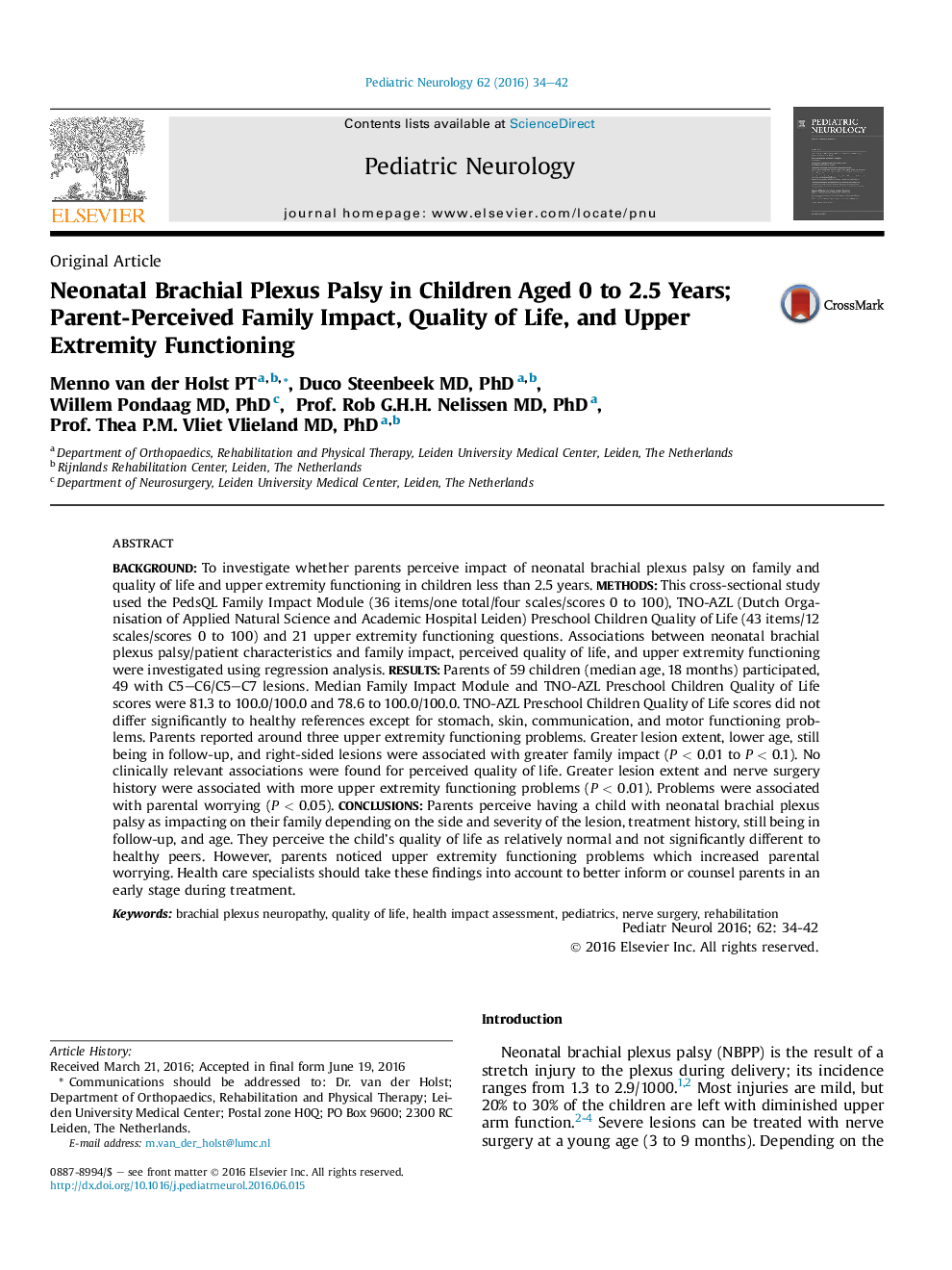| کد مقاله | کد نشریه | سال انتشار | مقاله انگلیسی | نسخه تمام متن |
|---|---|---|---|---|
| 3084257 | 1581264 | 2016 | 9 صفحه PDF | دانلود رایگان |
BackgroundTo investigate whether parents perceive impact of neonatal brachial plexus palsy on family and quality of life and upper extremity functioning in children less than 2.5 years.MethodsThis cross-sectional study used the PedsQL Family Impact Module (36 items/one total/four scales/scores 0 to 100), TNO-AZL (Dutch Organisation of Applied Natural Science and Academic Hospital Leiden) Preschool Children Quality of Life (43 items/12 scales/scores 0 to 100) and 21 upper extremity functioning questions. Associations between neonatal brachial plexus palsy/patient characteristics and family impact, perceived quality of life, and upper extremity functioning were investigated using regression analysis.ResultsParents of 59 children (median age, 18 months) participated, 49 with C5–C6/C5–C7 lesions. Median Family Impact Module and TNO-AZL Preschool Children Quality of Life scores were 81.3 to 100.0/100.0 and 78.6 to 100.0/100.0. TNO-AZL Preschool Children Quality of Life scores did not differ significantly to healthy references except for stomach, skin, communication, and motor functioning problems. Parents reported around three upper extremity functioning problems. Greater lesion extent, lower age, still being in follow-up, and right-sided lesions were associated with greater family impact (P < 0.01 to P < 0.1). No clinically relevant associations were found for perceived quality of life. Greater lesion extent and nerve surgery history were associated with more upper extremity functioning problems (P < 0.01). Problems were associated with parental worrying (P < 0.05).ConclusionsParents perceive having a child with neonatal brachial plexus palsy as impacting on their family depending on the side and severity of the lesion, treatment history, still being in follow-up, and age. They perceive the child's quality of life as relatively normal and not significantly different to healthy peers. However, parents noticed upper extremity functioning problems which increased parental worrying. Health care specialists should take these findings into account to better inform or counsel parents in an early stage during treatment.
Journal: Pediatric Neurology - Volume 62, September 2016, Pages 34–42
